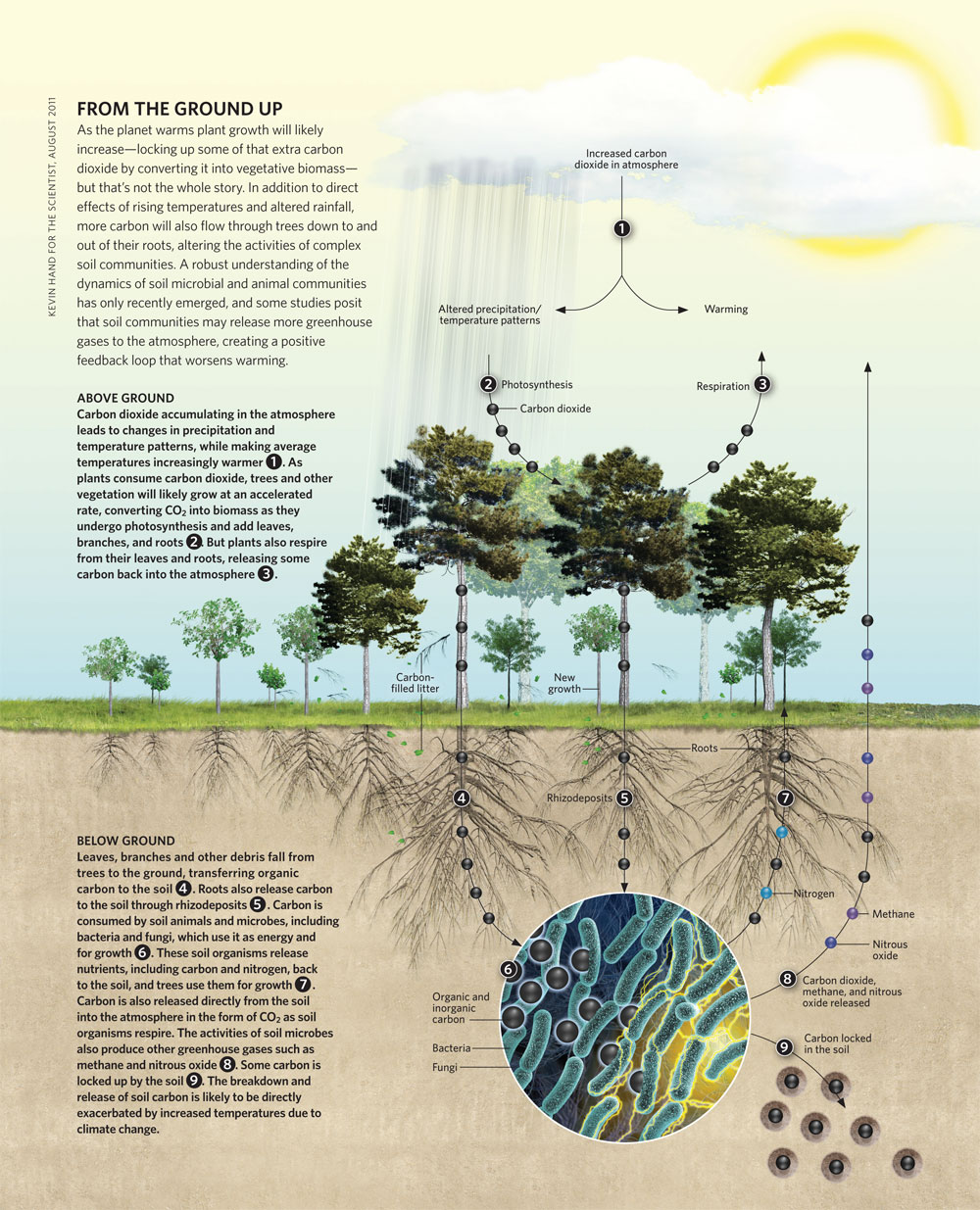 The Scientist | New research suggests that the flow of carbon through plants to underground ecosystems may be crucial to how the environment responds to climate change. Human beings have inexorably altered the world’s ecosystems. We’ve plowed and seeded more than 40 percent of the Earth’s land surfaces, introduced alien species into new territories, poured carbon dioxide into the atmosphere, disrupted natural climate cycles, and polluted aquatic ecosystems with excessive nitrogen and other contaminants.
The Scientist | New research suggests that the flow of carbon through plants to underground ecosystems may be crucial to how the environment responds to climate change. Human beings have inexorably altered the world’s ecosystems. We’ve plowed and seeded more than 40 percent of the Earth’s land surfaces, introduced alien species into new territories, poured carbon dioxide into the atmosphere, disrupted natural climate cycles, and polluted aquatic ecosystems with excessive nitrogen and other contaminants.
These far-reaching changes have spurred scores of researchers to examine the impacts of human activities on biodiversity and ecosystem functioning, and to devise management strategies that might lessen the damage. Scientists have scoured ecosystems from the ocean’s depths to the highest mountain peaks searching for signals of global change. But only recently has this attention extended under the Earth’s surface to the soil, and the linkages between plants and belowground microbial and animal communities. This realm of research is of paramount importance because the impact of human-induced disturbances on the functioning of terrestrial ecosystems is often indirect: they tend to operate via changes aboveground that cascade belowground to the hugely complex and diverse, soil-bound biological community, driving biogeochemical processes and feeding back to the whole Earth-system.
And these studies may be overturning a commonly held view of how plants help mitigate the impacts of global warming. Indeed, it is widely thought that vegetation, especially trees, will respond to increasing atmospheric CO2 concentrations by growing more vigorously, and thus help to moderate climate change by locking up more carbon in their leaves, branches, and trunks. But research into the intricate dynamics occurring just below the soil surface, where carbon, nitrogen, and other elements flow through plant roots into the soil and react with the microbial and animal communities living there—including bacteria, fungi and a host of fauna—is complicating this simplistic view. In fact, some work suggests that as plant growth increases because of elevated CO2, more carbon not only flows into the plants themselves, but also exits their roots to impact the growth and activity of soil microbes. This causes a net increase in CO2 and other greenhouse gases escaping from the soil and entering the atmosphere, thus adding to anthropogenic levels.
These insights indicate that a combined plant-microbial-soil approach can lead to a more holistic understanding of the consequences of global change—including climate change—for the health and functioning of both terrestrial ecosystems and the whole Earth-system. Most importantly, the role that plant-microbial-soil interactions, and specifically carbon transfer from roots to soil, play in governing climate change and its impact on ecosystem carbon cycling is coming to light.


0 comments:
Post a Comment